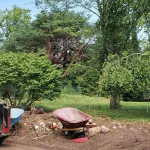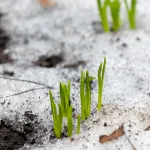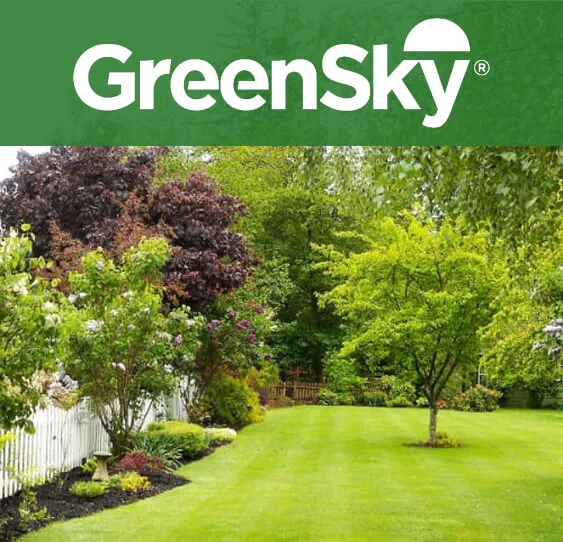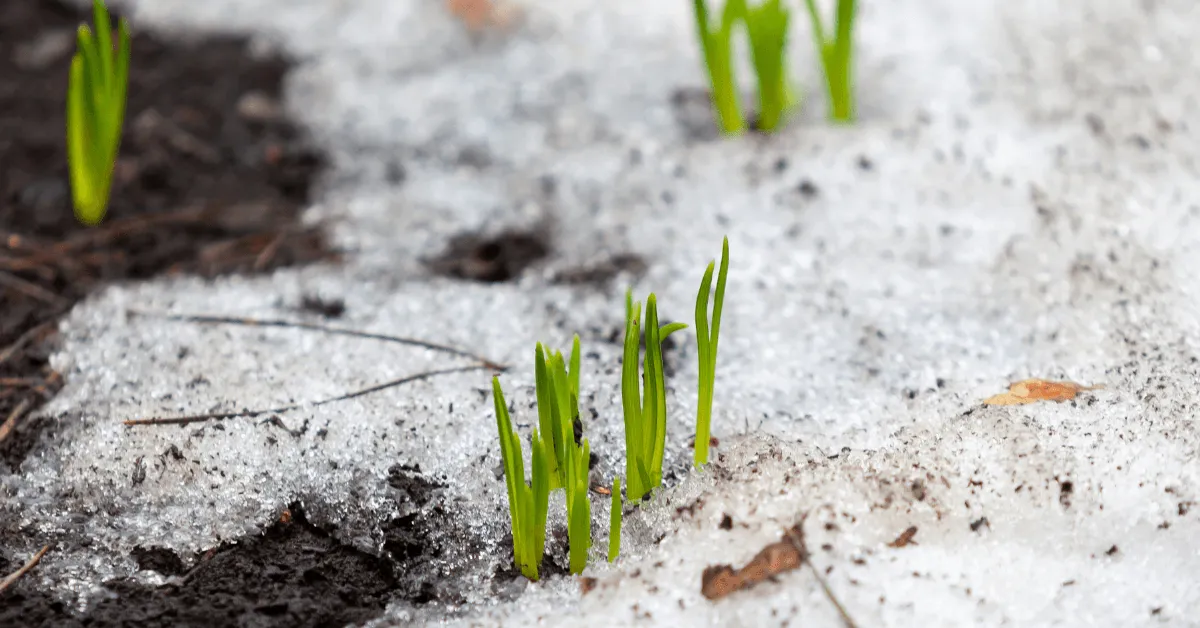
November 14, 2025
As autumn settles over Greater Milwaukee and the leaves begin to fall, it’s the ideal time to strengthen your trees’ root systems before winter. Milwaukee’s cool fall temperatures and clay-rich soils create prime conditions for deep root feeding. Even as top growth slows, roots remain active well into late fall, storing nutrients that fuel next spring’s recovery.
Fall fertilization helps trees and shrubs rebuild after summer heat, improve soil structure, and prepare for the coming freeze. With over 56 years of local experience, Crawford Tree & Landscape’s ISA-Certified and Board-Certified Master Arborists develop customized Plant Health Care (PHC) programs designed for Southeastern Wisconsin’s unique soils and climate. Whether you’re in Mequon, Fox Point, or Wauwatosa, Crawford Tree & Landscape ensures your landscape receives the balanced, season-specific nutrition it needs to thrive year-round.
How Fall Fertilization Strengthens Trees Before Winter
Fall fertilization helps trees and shrubs strengthen roots, repair summer damage, and prepare for dormancy. As air temperatures cool and soil remains warm, roots continue to grow underground even when foliage stops producing energy.
Key Benefits of Fall Fertilization:
- Root Development: Strengthens root systems before winter freezes.
- Nutrient Storage: Provides essential nutrients for spring leaf and flower growth.
- Stress Recovery: Helps plants recover from drought and heat stress.
- Improved Winter Hardiness: Increases resistance to frost and disease.
Milwaukee’s heavy clay soils can restrict oxygen and water flow, making it challenging for plants to absorb nutrients. Professional fertilization helps balance soil chemistry and ensures optimal nutrient uptake.
Milwaukee’s Soil and Climate: What Makes Local Fertilization Unique
Greater Milwaukee’s landscapes experience four distinct seasons, from humid summers to frigid winters. These swings place unique demands on trees and plants. Local soils, often rich in clay, hold moisture but drain slowly. This can lead to nutrient deficiencies and compaction.
Common Soil Challenges in Milwaukee:
- Clay-dominant composition: Limits air circulation and root expansion.
- High pH levels: Reduce nutrient availability for acid-loving plants.
- Salt exposure: De-icing in winter can damage roots.
Crawford Tree & Landscape’s PHC specialists perform soil testing to determine exact nutrient levels and select the ideal fertilizer blend for each property. This ensures your trees receive balanced nutrition specific to their environment.
Seasonal Timing and Weather Considerations for Fall Fertilization
Milwaukee’s fall weather can shift quickly from mild September days to early November frosts. Timing your fertilization correctly ensures maximum nutrient absorption before the ground freezes.
Key Timing Guidelines:
- Early to Mid-Fall (Late September–October): Best window for nutrient uptake. Soil is still warm enough for active root growth.
- Before the First Hard Frost: Apply fertilizer at least 4–6 weeks before consistent freezing to allow nutrients to settle into the root zone.
- Avoid Wet or Waterlogged Soil: Heavy fall rains can lead to runoff and reduce fertilizer efficiency.
Crawford Tree & Landscape monitors local weather patterns and soil temperatures across Greater Milwaukee to schedule fertilization precisely when trees can absorb the most benefit. This climate-aware approach helps clients in areas like Mequon, Brookfield, and Whitefish Bay get lasting results from every treatment.
How Fall Fertilization Works
Professional fall fertilization focuses on root zone nourishment rather than top growth by delivering nutrients directly to where they’re needed most. Here’s how our process works:
- Soil Analysis: Determines existing nutrient levels and pH balance.
- Root Zone Injection: Delivers liquid fertilizer deep into the soil using specialized equipment.
- Custom Blend Application: Balanced with nitrogen, phosphorus, potassium, and micronutrients.
- Follow-Up Inspection: Ensures even distribution and evaluates plant response.
This slow-release feeding method supports steady nutrient availability throughout winter and early spring.
Nutrients Essential for Fall Fertilization
A well-balanced fertilizer blend is key to long-term tree and plant health. The nutrient mix used by ISA-Certified Arborists focuses on strengthening below-ground activity. Below is a breakdown of essential nutrients used in fall fertilization and their specific roles.
| Nutrient | Function | Benefit for Fall Season |
| Nitrogen (N) | Supports chlorophyll and leaf tissue recovery | Helps plants rebuild after summer stress |
| Phosphorus (P) | Promotes root development | Encourages strong root systems for winter survival |
| Potassium (K) | Enhances cold tolerance and disease resistance | Strengthens cell walls and improves winter hardiness |
| Micronutrients (Fe, Zn, Mn) | Aid in metabolic processes | Maintain color and prevent nutrient deficiencies |
Each nutrient plays a vital role in ensuring plants have the reserves needed to burst back to life in spring.
Trees and Shrubs That Benefit Most from Fall Fertilization
While most landscape plants benefit from fall feeding, certain species respond particularly well to added nutrients before dormancy.
Ideal Candidates:
- Maple trees – Common across Milwaukee, they benefit from root-strengthening nutrients.
- Oaks and ashes – Require steady feeding to resist fungal diseases and Emerald Ash Borer.
- Evergreens (spruce, pine) – Maintain active roots longer into winter.
- Flowering shrubs (lilac, hydrangea) – Store nutrients for early spring blooms.
In neighborhoods like Whitefish Bay and Wauwatosa, where mature shade trees dominate, fall fertilization is one of the most effective ways to preserve canopy health and prevent dieback.
Signs Your Trees or Plants Need Fertilization
Even healthy-looking trees can be nutrient-deficient. Recognizing the signs early helps prevent long-term decline.
Common Symptoms:
- Yellowing or pale leaves (chlorosis)
- Thin canopy or poor leaf density
- Stunted growth despite adequate watering
- Early leaf drop or small leaf size
- Weak branches are prone to breakage
If your property in Bayside, Fox Point, or Brookfield shows these signs, a PHC evaluation can pinpoint whether nutrient imbalance, compaction, or pest stress is the root cause.
DIY vs. Professional Fertilization: What Homeowners Should Know
While over-the-counter fertilizers may seem convenient, improper application can lead to nutrient burn, runoff, or uneven feeding. Professional fertilization ensures accuracy and long-term benefits.
Why Choose Professional Service
- ISA-Certified Expertise: Knowledge of local soil chemistry and tree biology.
- Precision Equipment: Delivers nutrients directly to root zones without harming turf.
- Custom Formulas: Tailored for species, age, and site conditions.
- Ongoing Monitoring: Prevents overfertilization and promotes balanced growth.
At Crawford Tree & Landscape, we listen to your personal preferences and historical knowledge of your property before creating a fertilization plan. This ensures both tree health and landscape harmony.
Eco-Friendly Fertilization and Soil Stewardship
Sustainable fertilization practices are essential for preserving Milwaukee’s urban forest and protecting nearby waterways, especially around Lake Michigan. Crawford Tree & Landscape uses environmentally responsible methods that nourish plants while minimizing runoff and chemical buildup.
Our Eco-Conscious Approach:
- Slow-Release Formulas: Reduce leaching and provide a steady nutrient supply over months.
- Organic and Low-Salt Options: Prevent soil degradation and protect sensitive species.
- Precision Root Zone Injection: Targets nutrients directly where roots need them, avoiding waste and surface contamination.
- Regular Soil Testing: Prevents over-fertilization by adjusting nutrient levels based on real data.
Sustainable care doesn’t just protect the environment; it strengthens soil structure, improves microbial health, and supports long-term root vitality. Homeowners who invest in eco-friendly fertilization see healthier, more resilient trees season after season.
Integrating Fall Fertilization into a Plant Health Care Program
Fertilization is most effective when combined with other proactive Plant Health Care (PHC) services. A holistic approach helps trees resist disease, pests, and weather extremes.
Complementary PHC Services:
- Mulching: Insulates roots and improves moisture retention.
- Tree Pruning: Removes weak branches and promotes airflow.
- Soil Aeration: Reduces compaction and enhances root absorption.
- Pest and Disease Monitoring: Detects issues like Emerald Ash Borer early.
A well-balanced PHC program prepares your landscape to withstand Milwaukee’s icy winters and thrive come spring.
How Milwaukee’s Climate Influences Fertilization Timing
Milwaukee’s fall season typically runs from late September through November. The best window for fertilization is after leaves begin dropping, but before the first hard frost. This allows ample time for root absorption.
Local Tips:
- Avoid fertilizing during drought or frozen ground.
- Pair fertilization with deep watering for the best absorption.
- Apply mulch to retain soil warmth and protect roots.
Neighborhoods like Glendale, Shorewood, and Mequon often experience early temperature drops due to proximity to Lake Michigan, making mid-fall the ideal period for fertilization.
Frequently Asked Questions
How often should trees be fertilized in Milwaukee?
Most established trees benefit from fertilization once every 1–2 years, depending on soil health and species. A professional soil test helps determine the exact frequency.
Can fall fertilization harm trees?
When done correctly by ISA-Certified Arborists, fall fertilization is completely safe and beneficial. It should not stimulate new top growth but rather support root development.
What’s the difference between surface and deep-root fertilization?
Surface applications nourish shallow-rooted plants and turf, while deep-root fertilization targets tree roots 8–12 inches below the soil for more effective nutrient delivery.
Is fall fertilization necessary for evergreens?
Yes. Evergreens continue photosynthesis longer into the fall season and benefit greatly from added nutrients before the soil freezes.
Do I need to water after fertilization?
Yes. Watering helps carry nutrients into the soil and supports root uptake. Moist soil also protects roots from freezing.
Preparing Your Landscape for Winter Success
Fall fertilization is more than a seasonal task – it’s an investment in your landscape’s future. By focusing on root strength, nutrient balance, and soil health, you’ll ensure that your trees and plants emerge in spring healthier and more resilient than ever.
Crawford Tree & Landscape has helped Greater Milwaukee homeowners maintain vibrant, safe, and thriving landscapes. Whether you’re in Brookfield, Mequon, or Wauwatosa, our arborists are ready to support your property’s long-term health.
Ready to protect your landscape before winter? Request your free on-site consultation and firm price today.







 GreenSky® and GreenSky Patient Solutions® are loan program names for certain consumer credit plans extended by participating lenders to borrowers for the purchase of goods and/or services from participating merchants/providers. Participating lenders are federally insured, federal and state chartered financial institutions providing credit without regart to age, race, color, religion, national origin, gener or familial status. GreenSky® and GreenSky Patient Solutions® are registered trademarks of GreenSky, LLC. GreenSky Serviceing, LLC services the loans on behalf of participating lenders. NMLS 1416362. GreenSky, LLC and GreenSky Servicing, LLC are subsidiaries of Goldman Sachs Bank USA. Loans originated by Goldman Sachs are issued by Goldman Sachs Bank USA, Salt Lake City Branch.
GreenSky® and GreenSky Patient Solutions® are loan program names for certain consumer credit plans extended by participating lenders to borrowers for the purchase of goods and/or services from participating merchants/providers. Participating lenders are federally insured, federal and state chartered financial institutions providing credit without regart to age, race, color, religion, national origin, gener or familial status. GreenSky® and GreenSky Patient Solutions® are registered trademarks of GreenSky, LLC. GreenSky Serviceing, LLC services the loans on behalf of participating lenders. NMLS 1416362. GreenSky, LLC and GreenSky Servicing, LLC are subsidiaries of Goldman Sachs Bank USA. Loans originated by Goldman Sachs are issued by Goldman Sachs Bank USA, Salt Lake City Branch.





